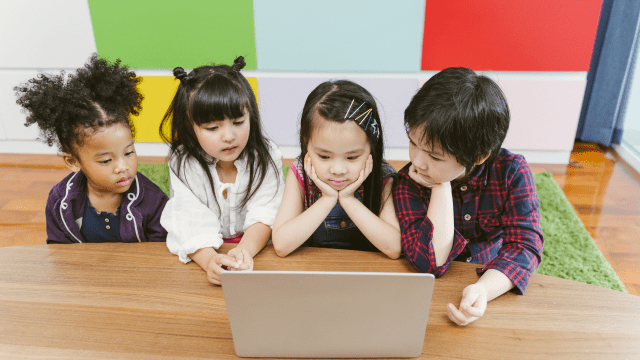The COVID-19 epidemic has underscored the significance of technology in the realm of Childhood Education. Laptops were provided to school-age youngsters, who then underwent many months of virtual schooling. Even the youngest students were present at home with their parents, engaged in tablet usage, following the closure of their Childhood Education.
Technology may serve as a beneficial instrument when employed to augment educational endeavors. Classroom technology, ranging from virtual field excursions to gamified learning, serves as an excellent means to enhance student enthusiasm and enhance learning conditions.
The use of technology in early learning contexts is governed by four criteria established by the U.S. Department of Education. The rules promote the development of essential talents, including play, self-expression, and problem-solving abilities.
Technology—when used appropriately—can be a tool for learning.
Technology, when utilised correctly, may serve as a means for acquiring knowledge.
When families and early educators integrate technology that is suitable for the developmental stage of children, these technologies may be utilised to facilitate learning and foster growth in novel ways.
According to the National Association for the Education of Young Children (NAEYC) and the Fred Rogers Centre, technology and interactive media can be used as tools in early Childhood Education for children from birth to age 8. These experiences enable children to have control over the medium and the result of the experience. They also allow children to explore the functionality of these tools and imagine how they might be used in real life.
The distinction between active and passive usage is a crucial determinant in determining the suitable utilisation of technology for educational purposes. Passive use of technology, wherein a youngster just engages in content consumption without active engagement, is not advisable and should be avoided. Active use stimulates involvement through verbal or physical reactions.
Technology should be used to increase access to learning opportunities for all children.
When technology is employed in a suitable manner and under the supervision of adults, it facilitates educational possibilities that may otherwise be unattainable. The ability to engage in interactive experiences with many groups and cultures is a valuable opportunity that may be inaccessible to many youngsters in the absence of technology.
The use of technology has the potential to significantly augment the process of learning within the domains of science, technology, engineering, and mathematics (STEM). These free, at-home options offer a wonderful blend of education and interactivity, ranging from examining cause and effect through online simulations to monitoring the Panda Cams at the Smithsonian National Zoological Park.
Technology may be used to strengthen relationships among parents, families, early Childhood Education and young children.
The majority of early learning programmes of superior quality employ technology as a means of engaging with parents and families. For instance, educational personnel have the ability to disseminate pertinent details like diaper changes, feeding regimens, or art projects directly to families using a mobile application or online platform. The updates may be presented in several formats, including text, photographs, or videos.
In addition to daily updates, technology serves as a prevalent means for providers to provide suitable materials to families. Information on upcoming activities, meal schedules, and community services can be disseminated to all families or targeted families as deemed suitable. This enables service providers to tailor a particular experience to individual families.
Technology is more effective for learning when adults and peers interact or co-view with young children.
Optimal learning occurs when children interact with parents, family members, or other reliable people. Children’s learning is enhanced when they are in the presence of their peers who are engaged in collective learning.
Active involvement in learning activities with young children is enhanced when an adult actively engages in these activities. Adults who facilitate the engagement, communication, learning, and creation of young children will establish more efficient learning environments.
A research study examining the relationship between maternal connection and 15-month-old children revealed that newborns exhibit a 22-fold increase in the likelihood of transferring learning from a touchscreen to a tangible item. However, this transfer was observed only when the activity involved substantial parental input and emotional reactivity.
